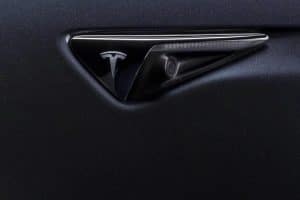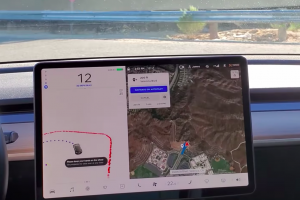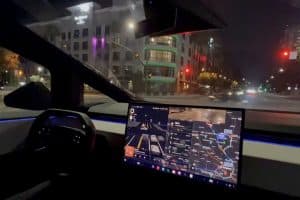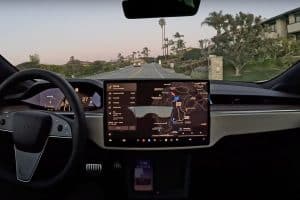- 🕶️ Tesla’s FSD v12.5 will allow drivers to wear sunglasses without prompts.
- 🚗 v12.5 will merge city and highway driving software stacks.
- ⏰ Release date of FSD v12.5 is still unclear.
- 🛻 FSD v12.5 is expected to support the Cybertruck.
- 🧪 Low levels of intervention are delaying FSD updates.
- 📊 Tesla uses Shadow Mode to test AI models against real driving behavior.
- 🔄 Testing AI models is currently the biggest bottleneck.
With Tesla’s strides toward a future where Full Self-Driving (FSD) cars become the norm, each software update brings the company closer to its vision. The much-anticipated Full Self-Driving (FSD) system update, v12.5, has created quite a buzz in the automotive and tech communities for several reasons. In this blog post, we’ll delve into the key features of FSD v12.5, potential release timeframes, and its implications for Tesla owners, particularly those anticipating the Cybertruck.
Key Features of FSD v12.5
🕶️ Allowing Sunglasses for Drivers
One of the stand-out changes in FSD v12.5 is the ability for drivers to wear sunglasses without receiving incessant prompts or “nags” from the system. Previously, the driver monitoring feature required drivers to maintain direct eye contact with the sensors, a restriction that could be inconvenient on sunny days.
🚗 Merging City and Highway Software Stacks
Another significant update is the merging of city and highway driving software stacks. Historically, Tesla’s FSD systems have had separate processing frameworks for urban environments and highways. This integration aims to provide a more seamless and adaptable driving experience.
Implications for Tesla Owners
🛻 Cybertruck Compatibility
The eagerly awaited Cybertruck is also on the list for FSD v12.5 compatibility. Despite not meeting the initial rollout date in late June, Tesla has emphasized that the v12.5 update will be ready for the Cybertruck upon deployment. For many prospective Cybertruck owners, this feature adds tremendous value.
The Challenges of Low Interventions
🧪 Delays Due to Low Interventions
One significant obstacle in rolling out FSD updates is the low level of interventions during testing. As the self-driving system improves, it requires fewer human interventions, making it more challenging to gather necessary data and benchmark newer AI models. Elon Musk has noted that testing becomes increasingly complex as the system evolves.
Tesla’s Unique Testing Approach
📊 Shadow Mode
To test new AI models against real driving behavior, Tesla employs a method known as “Shadow Mode.” This involves running the new AI model in parallel with the current one, comparing their responses without affecting the actual driving experience. By analyzing discrepancies between the predicted and actual outcomes, Tesla can make informed decisions about which model performs best.
🔄 AI Model Testing Bottlenecks
Testing AI models efficiently remains one of Tesla’s significant hurdles. With millions of cars providing real-world data, Tesla has elaborate systems to determine the efficacy of different AI models. However, this process is inherently time-consuming and complex.
Potential Release Date
⏰ When Will FSD v12.5 Be Released?
While a definitive release date remains elusive, there is much speculation in the community. Initially slated for late June, the FSD v12.5 update has faced delays. However, given Elon Musk’s statements, it appears the update is imminent and should roll out shortly.
Conclusion
The upcoming release of Tesla’s FSD v12.5 is a pivotal moment for both the company and its customers. From enabling drivers to wear sunglasses to merging city and highway driving systems, this update promises several improvements. However, the challenges Tesla faces in testing and rolling out these advanced AI models cannot be overlooked. As we await the official release, one thing is certain: Tesla continues to push the envelope in autonomous driving technology, making significant strides toward a fully self-driving future.





